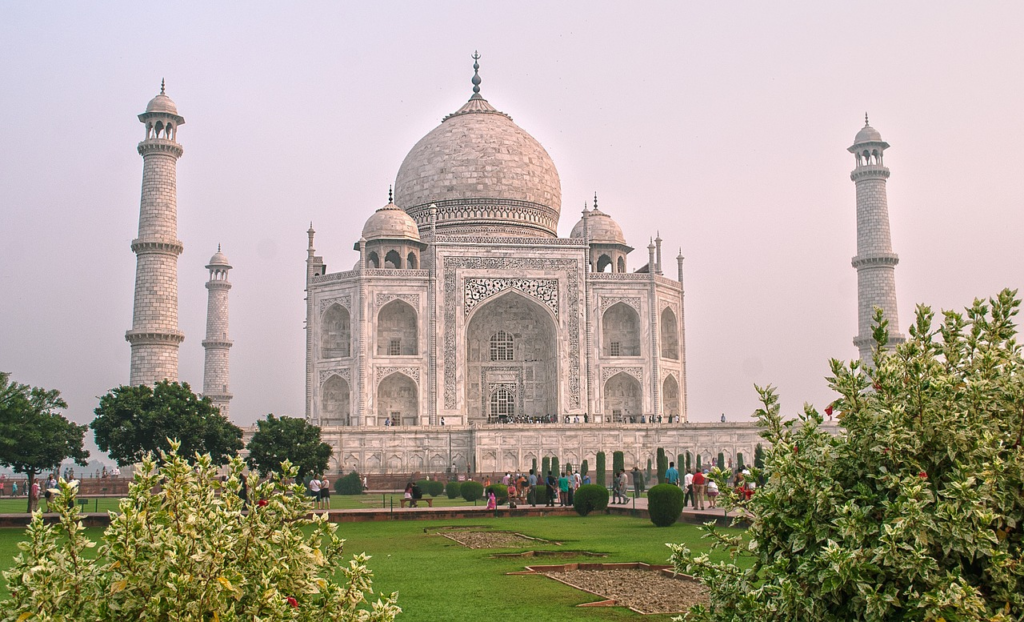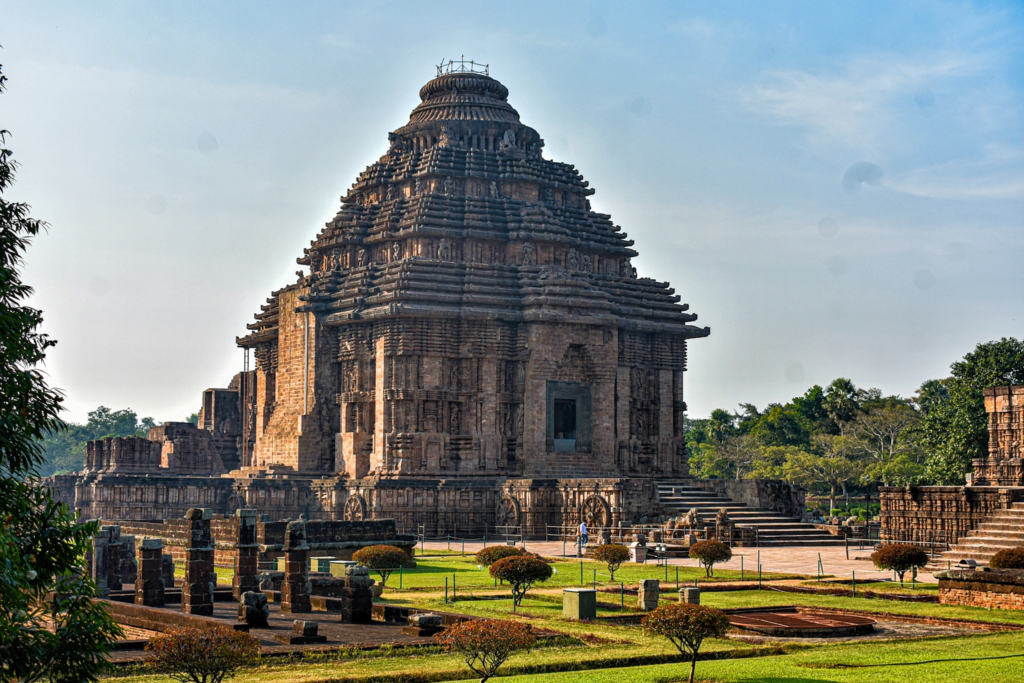Places to visit in India to see must-visit monuments in India
India, a land of unparalleled heritage and architectural brilliance, beckons travelers with its treasure trove of historical wonders. From the opulent palaces of Rajasthan to the ancient rock-cut caves of Maharashtra, the country offers a journey through time like no other. Whether you’re an admirer of intricate craftsmanship or a history enthusiast keen on unraveling the stories etched in stone, the must-visit monuments in India promise to captivate your soul. These architectural marvels not only showcase the artistic prowess of bygone eras but also stand as testaments to the country’s rich cultural fabric.
The allure of India’s historical places lies in their diversity—from the towering minarets of Mughal splendor to the serene caves adorned with centuries-old carvings. Each monument tells a tale, a whisper of the past that reverberates through the ages. As you wander through these iconic landmarks, you’re not merely visiting structures but stepping into the pages of history. Join us as we embark on a journey to uncover the top 5 historical monuments of India, along with other gems, that epitomize the grandeur and legacy of this magnificent country.
In this Blog
10 Places to Visit in India to See Must-Visit Monuments
Taj Mahal, Agra

An epitome of love and an architectural masterpiece, the Taj Mahal needs no introduction. This UNESCO World Heritage Site is the crowning jewel of Mughal architecture, blending Persian, Islamic, and Indian design elements. Built by Emperor Shah Jahan in memory of his beloved wife Mumtaz Mahal, the monument’s ivory-white marble facade gleams under the sunlight, exuding an ethereal charm. The intricate inlay work of semi-precious stones, coupled with its perfectly symmetrical design, makes it one of the must-visit monuments in India. Visitors from across the globe come to witness the mesmerizing play of colors on the Taj’s surface during sunrise and sunset, making it a truly unforgettable experience.
Elephanta Caves, Mumbai

Situated on an island off the coast of Mumbai, the Elephanta Caves are a marvel of ancient rock-cut architecture. Dating back to the 5th-8th centuries, these caves are dedicated to Lord Shiva and are renowned for their intricate sculptures and carvings. The colossal statue of Trimurti, depicting Shiva in his three forms—creator, preserver, and destroyer—is a sight to behold. A ferry ride from the Gateway of India takes you to this UNESCO World Heritage Site, offering a glimpse into India’s spiritual and artistic heritage. It’s no wonder the Elephanta Caves, Mumbai, are considered among the top 5 historical monuments of India.
Hawa Mahal, Jaipur

The iconic Hawa Mahal, also known as the “Palace of Winds,” stands as a symbol of Jaipur’s royal grandeur. Constructed in 1799 by Maharaja Sawai Pratap Singh, this five-story palace is adorned with 953 intricately designed jharokhas (windows). Built from red and pink sandstone, the Hawa Mahal was designed to allow royal women to observe street festivities without being seen. Its honeycomb-like structure, combined with the cooling effect of its windows, showcases the architectural ingenuity of its era. A visit to Jaipur is incomplete without marveling at this exquisite piece of Rajputana artistry.
Red Fort, Delhi

Dominating the heart of India’s capital, the Red Fort is a symbol of India’s sovereignty and rich Mughal history. Built in 1648 by Emperor Shah Jahan, this imposing fortress of red sandstone served as the Mughal dynasty’s main residence for over two centuries. The fort’s Lahori Gate and Delhi Gate are architectural marvels, while the Diwan-i-Aam and Diwan-i-Khas reflect the opulence of Mughal court life. Today, the Red Fort, Delhi, stands as a UNESCO World Heritage Site and a reminder of the nation’s resilience and grandeur.
Charminar, Hyderabad
A masterpiece of Indo-Islamic architecture, the Charminar is synonymous with Hyderabad’s cultural identity. Built in 1591 by Muhammad Quli Qutb Shah, this iconic monument features four towering minarets, each adorned with intricate detailing. The Charminar, located at the heart of Hyderabad’s bustling old city, is a hub of activity and a gateway to discovering the city’s rich heritage. Surrounded by vibrant bazaars and offering stunning views of the city from its upper floors, the Charminar is undoubtedly one of the must-visit monuments in India.
Khajuraho Temples, Madhya Pradesh

Famous for their intricate erotic sculptures, the Khajuraho Temples are a testament to India’s artistic and cultural brilliance. Built between the 9th and 11th centuries by the Chandela dynasty, these temples feature exquisite carvings depicting various aspects of life, including spirituality, love, and human emotions. The group of temples is a UNESCO World Heritage Site and remains a marvel of medieval Indian architecture.
Konark Sun Temple, Odisha

Dedicated to the Sun God, the Konark Sun Temple is an architectural wonder. Designed as a colossal chariot with intricately carved wheels and horses, this 13th-century temple reflects the pinnacle of Kalinga architecture. The temple’s detailed carvings, which include depictions of daily life, celestial beings, and mythical creatures, make it one of the top 5 historical monuments of India.
Gateway of India, Mumbai

An emblem of colonial history, the Gateway of India is a monumental arch that graces Mumbai’s waterfront. Built in 1924 to commemorate King George V’s visit to India, this Indo-Saracenic structure combines Hindu and Islamic architectural styles. A visit to the Gateway is incomplete without a serene ferry ride that offers panoramic views of the city skyline.
Mysore Palace, Karnataka

A dazzling display of Indo-Saracenic architecture, the Mysore Palace is the pride of Karnataka. Once the royal residence of the Wodeyar dynasty, this palace is adorned with stained glass windows, ornate domes, and intricately designed interiors. During the Dasara festival, the palace transforms into a spectacle of lights, making it a must-visit monument in India.
Sanchi Stupa, Madhya Pradesh

One of India’s oldest stone structures, the Sanchi Stupa is a Buddhist architectural marvel dating back to the 3rd century BCE. Commissioned by Emperor Ashoka, this stupa features intricate carvings and gateways that narrate scenes from Buddha’s life. Its serene ambiance and historical significance make it a revered site for pilgrims and history enthusiasts alike.
Conclusion
India’s must-visit monuments are more than just architectural feats; they are windows into the country’s soul. Each of these historical places in India offers a unique glimpse into the artistry, culture, and stories of bygone eras. From the spiritual serenity of Elephanta Caves, Mumbai, to the regal splendor of Hawa Mahal, Jaipur, these landmarks embody the diverse heritage of the nation. Whether you’re exploring the timeless beauty of the Taj Mahal or marveling at the intricate sculptures of the Khajuraho Temples, the journey through these top 5 historical monuments of India and beyond will leave you spellbound. So, pack your bags and immerse yourself in the magic of India’s storied past. Adventure awaits at every corner of this historical haven.




